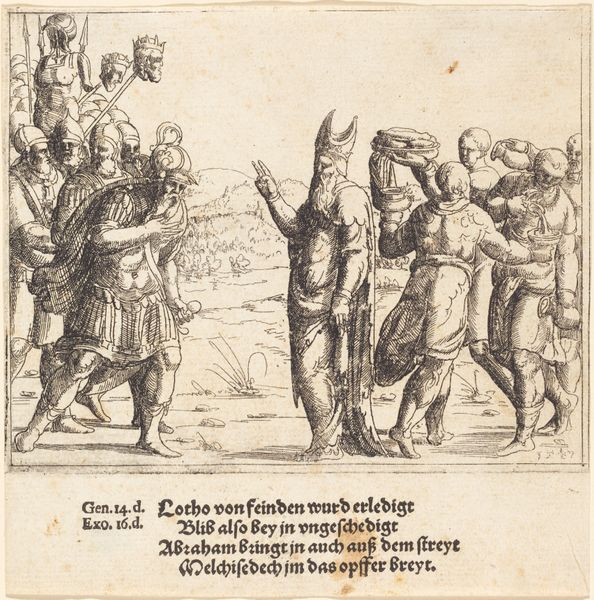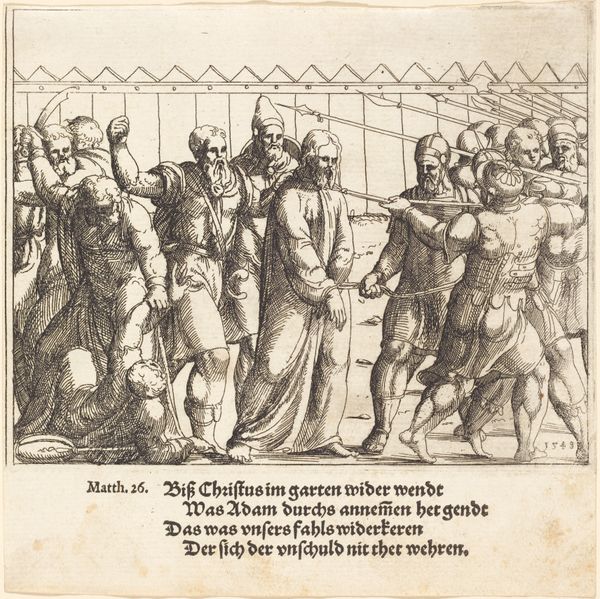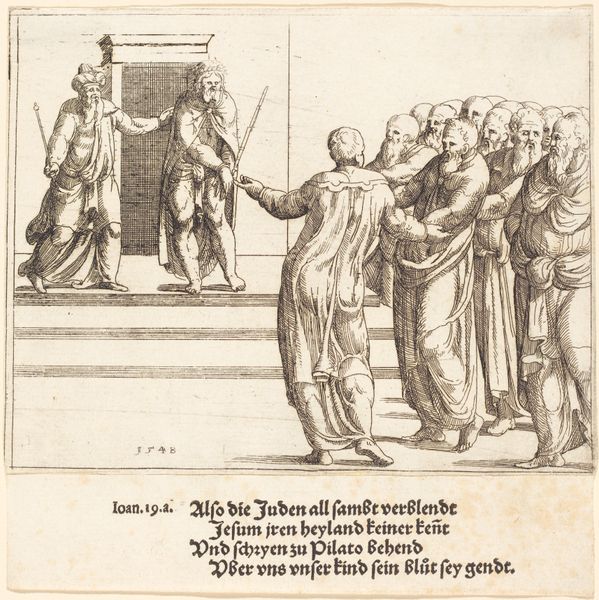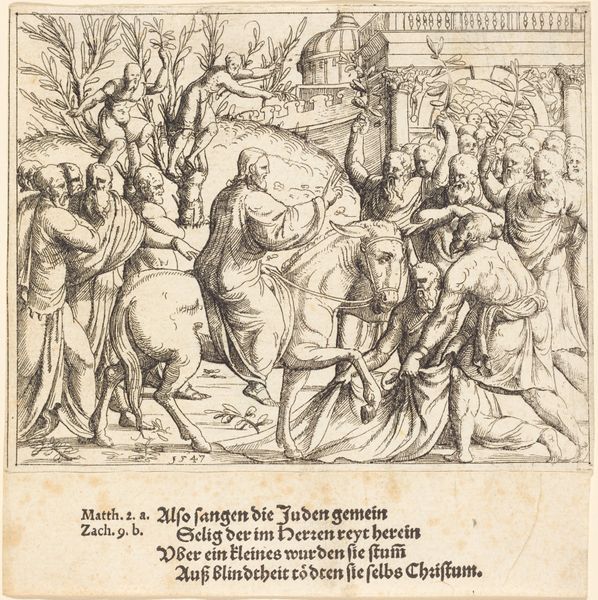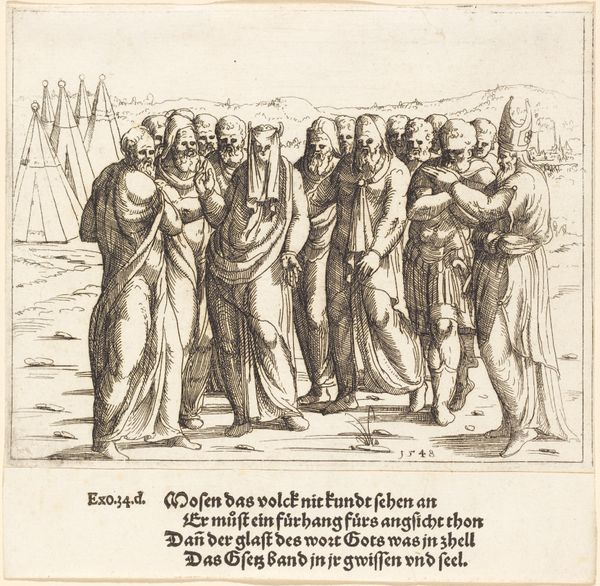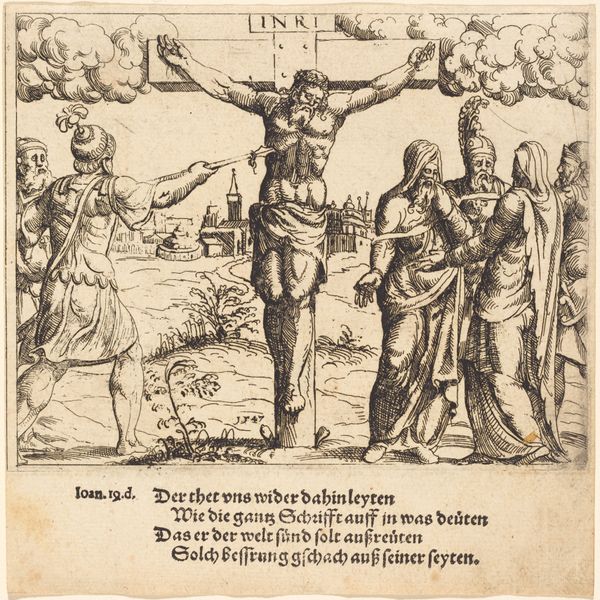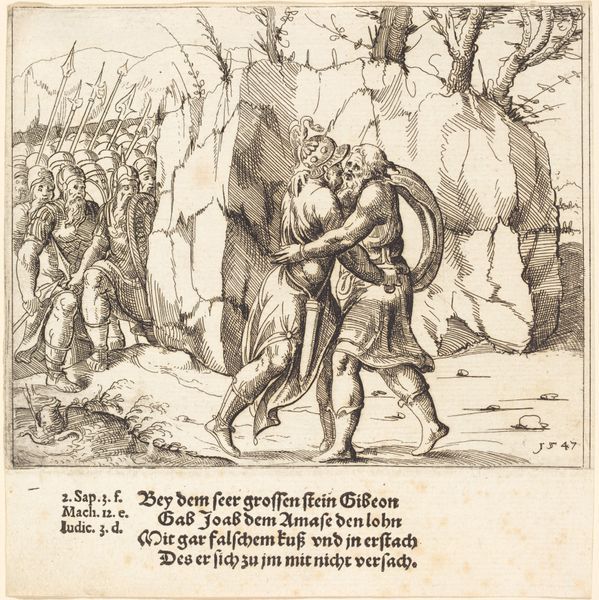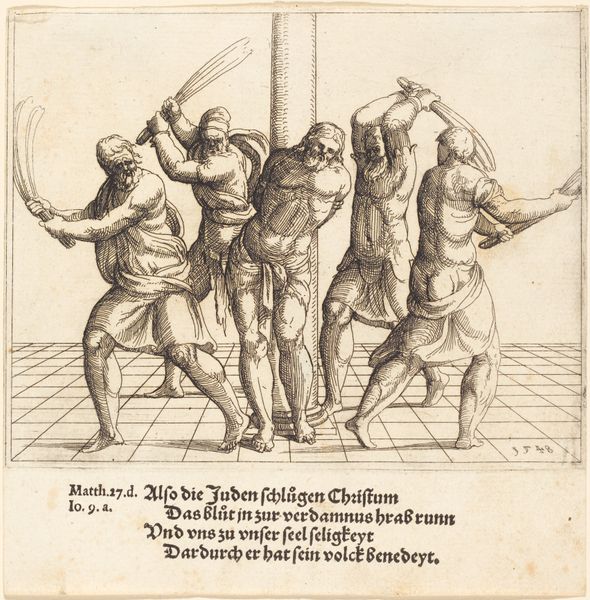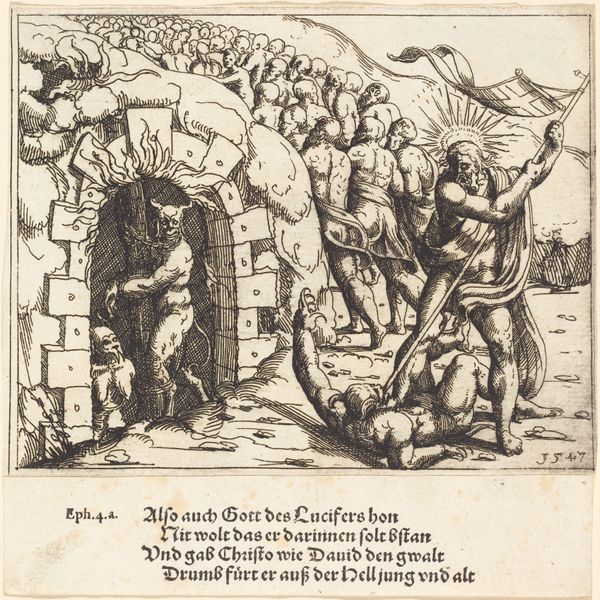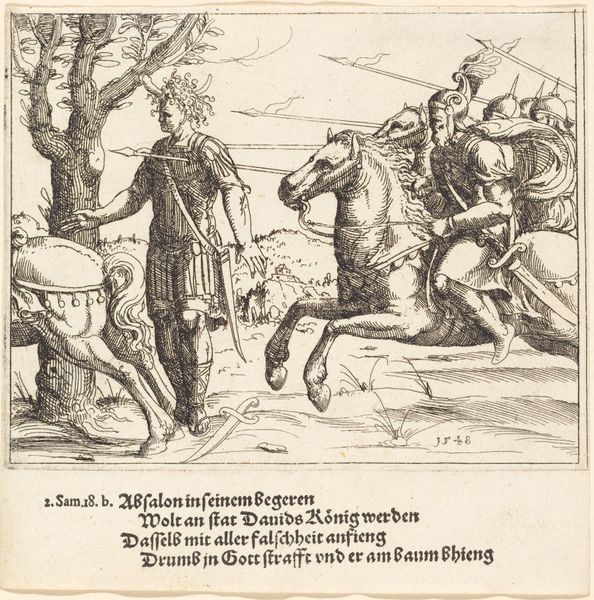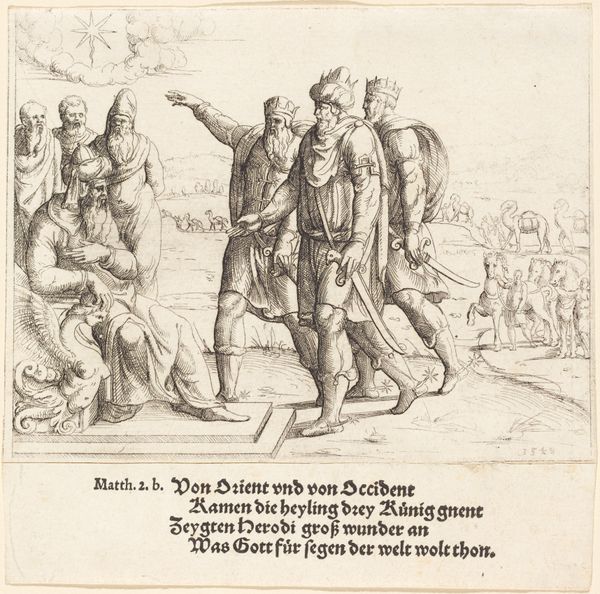
print, engraving
#
narrative-art
# print
#
figuration
#
history-painting
#
northern-renaissance
#
engraving
Copyright: National Gallery of Art: CC0 1.0
Augustin Hirschvogel's "The Kiss of Judas," created in 1547, presents a stark scene rendered through precise linework. The composition is dominated by the central embrace, a flurry of lines creating texture and depth. Notice how the figures are tightly packed, yet the precision of each line allows the viewer to understand the unfolding narrative. The artist masterfully uses line to convey both form and emotion. The crosshatching and varied stroke weights create a sense of unease, mirroring the treachery of the moment. The texture is palpable, from the heavy folds of the robes to the bristling beards, each line adding a layer of complexity. Hirschvogel's formal approach transforms a biblical narrative into a study of human duplicity and betrayal. The detailed rendering of the figures and their garments, combined with the tension in the composition, challenges us to reflect on the story's enduring themes of loyalty, faith, and deceit. As we contemplate this piece, consider how the artist uses structure and composition not merely to depict an event, but to engage us in its moral and emotional complexities.
Comments
No comments
Be the first to comment and join the conversation on the ultimate creative platform.
